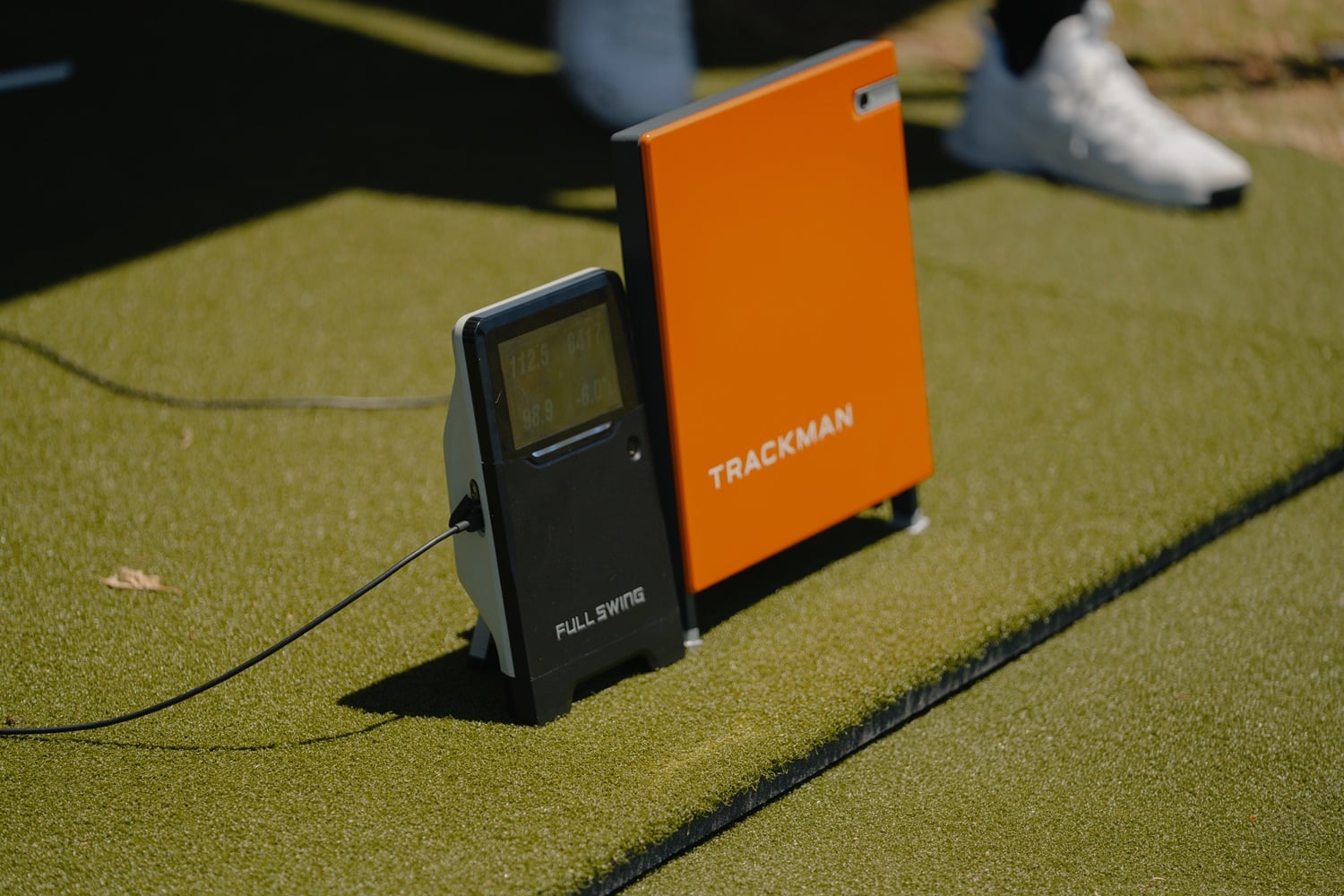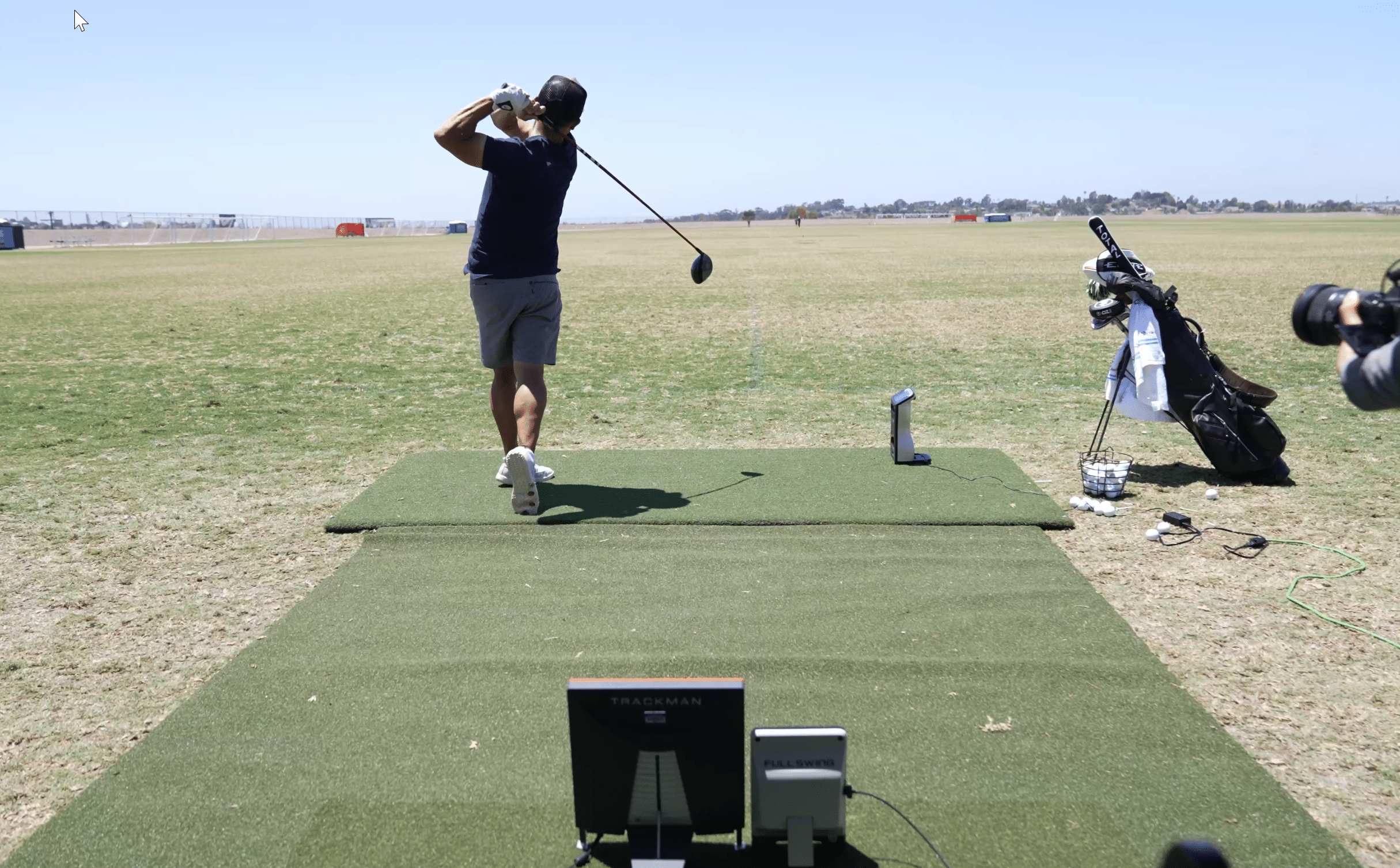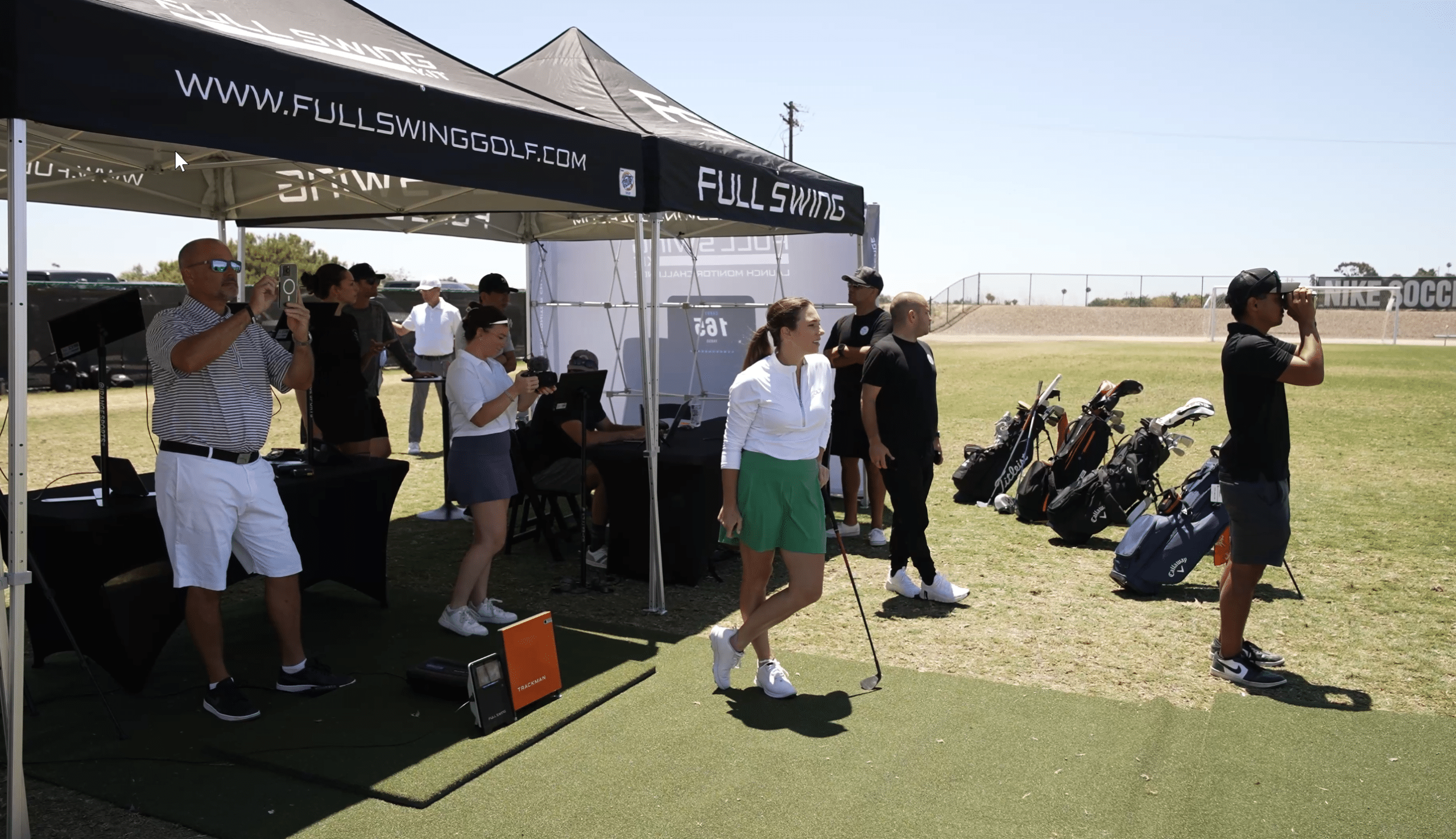TrackMan golf simulators are incredibly accurate, providing carry distance precision within 1-3% for drivers and keeping ball speed variance under 3% for irons. You're getting the same technology that 90 of the world's top 100 golfers trust daily! The dual radar system captures over 40 measurements at 40,000 frames per second, which is why it's the official launch monitor for both PGA and LPGA Tours. However, lighting conditions and temperature changes can affect performance, so understanding these factors will help you enhance your simulator experience.
TrackMan's precision comes from its sophisticated dual radar system that works like having two high-tech eyes watching every aspect of your golf swing. One radar focuses exclusively on your club movement and impact data, while the other tracks your ball's complete flight path for roughly six seconds. This dual approach captures way more information than optical systems that only see fractions of a second! The key point—radar waves are longer than light waves, so they'll track your shots in any weather or lighting condition. The system samples data at an incredible 40,000 frames per second, collecting billions of data points during your session. You're getting over 40 different measurements, from clubface angle to spin rate, creating an incredibly detailed illustration of your swing. The technology incorporates Optically Enhanced Radar Tracking that combines synchronized radar systems with built-in camera capabilities for enhanced precision. This comprehensive analysis allows golfers to understand every swing detail with unprecedented accuracy. The TrackMan iO system features ultra-high-speed cameras capable of capturing up to 4,600 frames per second for even more detailed ball and club analysis.

When you're looking at the professional golf world, nothing speaks louder about accuracy than what the pros actually use—and here's where TrackMan really shines. About 90 of the top 100 golfers worldwide rely on TrackMan devices regularly, which tells you everything about professional trust in this technology.
TrackMan serves as the official launch monitor for both the PGA Tour and LPGA Tour, supplying critical swing and ball flight data. You'll see this data during live broadcasts, where TrackMan's precise measurements inform those advanced graphics and real-time analytics that make watching golf more engaging.
The brand consistently competes with major players like Foresight Sports and Golfzon, but TrackMan's radar technology and extensive data outputs keep it at the industry's forefront. Tour players don't just use it—they depend on it for shot analysis and training decisions. This professional adoption reflects TrackMan's significant investment in cutting-edge technology and extensive research that has made it a trusted tool across the golf industry. The global golf simulator market was valued at USD 1.74 billion in 2024 and continues to expand rapidly. The growing integration of AR/VR technology in golf simulation is further enhancing the training experience for both professionals and amateur golfers.
Accuracy doesn't stay consistent across every type of golf club—and understanding these differences helps you make smarter decisions about simulator training. TrackMan's dual radar technology delivers impressive precision across all categories, but some clubs shine brighter than others.
For drivers and woods, you'll see carry distance accuracy within 1-3% of outdoor measurements. That's remarkably close! Iron and wedge ball speed stays under 3% variance, while the system captures lively loft and spin rates with professional-grade precision.
Here's where it gets interesting: putting measurements include face rotation and impact speed tracking, despite putts being incredibly sensitive to tiny variations. TrackMan's 3D flight mapping differentiates subtle effects between club types, ensuring your driver data doesn't get mixed up with your wedge performance. The system's high-speed camera captures club and ball movement at up to 4,600 frames per second for enhanced tracking precision. TrackMan's Doppler radar technology provides full ball flight tracking that delivers precise data regardless of shot distance. This industry standard accuracy is why TrackMan is trusted by top professionals and PGA tours for their training and performance analysis.
Choosing the right simulator means looking beyond TrackMan's impressive specs to see how it stacks up against real competition. The fact is—TrackMan isn't always the clear winner. Full Swing KIT delivers nearly identical data accuracy at a fraction of the cost, proving you don't need to break the bank for professional-grade results. Meanwhile, Foresight Sports' GCQuad actually outperforms TrackMan 4 when you hit those inevitable toe strikes and mishits, showing tighter data spreads and lower variance in spin rates.
Golfzon takes a different approach entirely, prioritizing entertainment with 200+ virtual courses while maintaining 90%+ accuracy. Sure, TrackMan edges out with professional-grade analytics, but competitor systems often win on user-friendliness and setup simplicity! The Foresight Sports products notably the Quad and QuadMAX are among the most popular systems seen on tour and used by top players for their exceptional accuracy. Independent testing by GolfBusters confirms these accuracy claims through real-world conditions that mirror actual practice scenarios.

Once you step up to the TrackMan simulator, something extraordinary happens—you're not just hitting balls into a screen, you're getting a real-time expert lesson on your swing. The system captures your ball flight for six seconds using dual radar technology that samples 40,000 times per second. That means you'll see exactly how your launch angle, ball speed, and spin rate affect each shot instantly.
Here's the thing—this immediate feedback creates a direct link between your swing and results. When you adjust your club path or face angle, you'll see the changes reflected in real-time data. This eliminates guesswork and accelerates your learning curve considerably. Instead of wondering why that shot went left, you'll know exactly what happened and can make micro-adjustments during practice. The Doppler radar continuously tracks object movement throughout your entire swing sequence, ensuring no critical data points are missed. This advanced tracking technology delivers over 90% accuracy in key metrics, making it trusted by both amateurs and professionals for reliable swing analysis.
Unlike optical systems that require multiple cameras and have limited capture windows, TrackMan's radar technology functions effectively in any weather conditions while maintaining its precision throughout the measurement process.
While TrackMan's dual radar technology delivers impressive precision in controlled settings, real-world golf presents challenges that even the most sophisticated simulators can't fully replicate. You'll find that environmental factors greatly impact accuracy. Lighting conditions can interfere with sensors—excessive brightness or shadows reduce ball tracking precision. Temperature and altitude changes affect ball flight physics, though TrackMan does allow custom altitude settings to help compensate.
Here's the thing: simulators can't replicate wind, weather, or uneven terrain that you'd face on an actual course. Artificial hitting mats don't perfectly mimic turf interaction, which influences your clubhead's impact mechanics. Indoor settings may also cause subtle changes in your swing mechanics due to different visual cues, affecting data consistency compared to outdoor play. The quality of your impact screen materials can also affect visual feedback and ball trajectory tracking within the simulator environment. Testing at facilities like Golf Galaxy performance centers can help you understand how these variables affect your personal measurements.

You'll spend between $20,000 to $70,000+ for a complete TrackMan simulator setup. The TrackMan iO starts at $13,995 for home use, but that's just the beginning! You'll need enclosures, projectors, hitting mats, and software subscriptions ($700-$1,100 annually). Premium packages with all the bells and whistles push toward the higher end, especially with installation costs added on top.
Yes, you can use TrackMan simulators for putting and short game practice, but with some limitations. TrackMan excels at tracking your chipping and pitching shots since they have higher ball speeds and clearer trajectories. However, putting accuracy isn't as precise because the radar struggles with very short distances and low speeds. You'll get better results using specialized putting mats designed for simulators.
You'll need at least 15 feet wide, 10 feet high, and 18 feet deep for a proper TrackMan setup. The minimum tee-to-screen distance is 8 feet 2 inches, though 10 feet works better. Your hitting area should be 6 feet deep by 5 feet wide. If you're tight on space, the TrackMan iO requires slightly less room but still needs those minimum clearances for safe swings.
You'll need to calibrate your TrackMan simulator at the start of each session to maintain accuracy. The calibration process only takes a few minutes using manual alignment tools or the auto target feature. Software updates happen automatically when you're connected online, with major updates releasing irregularly and minor patches appearing more frequently. If you move equipment or notice data inconsistencies, recalibrate immediately for best results.
Yes, TrackMan works perfectly for both left-handed golfers and junior players! You'll get the same 90%+ accuracy regardless of which hand you swing with—just select left-handed mode in the settings. For juniors, the system adjusts to slower swing speeds and provides real-time feedback that accelerates learning. You might need slight calibration when switching modes, but there's no reduction in data quality whatsoever.
You'll find TrackMan simulators deliver professional-grade accuracy that's hard to beat. With dual radar technology tracking your ball flight and club data within 99% accuracy, they're trusted by tour pros worldwide. Sure, environmental factors can affect readings, and you'll pay premium prices compared to competitors. But if you're serious about improving your game with reliable data, TrackMan's precision makes it worth the investment for dedicated golfers.